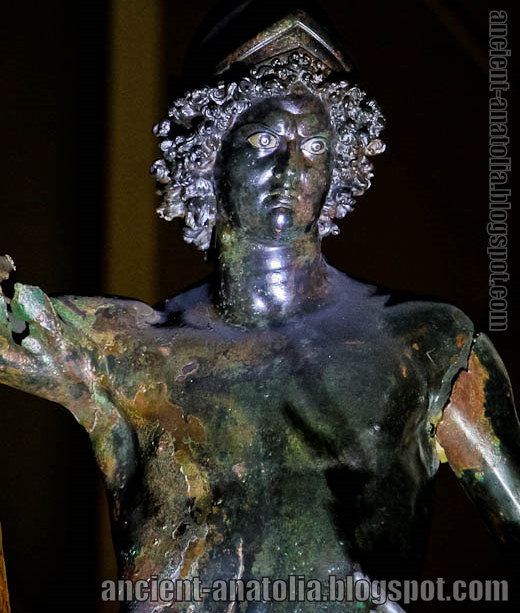
Mars, the god of war, found amongst storage jars in the larder of one of the Zeugma villas, stands with his furious glance, a spear in his hand and flowers in the other hand, Gaziantep Museum of Archaeology. Zeugma was an ancient city of Commagene; currently located in the Gaziantep Province of Turkey. It was a historical settlement which is considered among the four most important settlement areas under the reign of the kingdom of Commagene, which is partly submerged in the Birecik Dam Lake today.
Mars was the Roman god of war and also an agricultural guardian, a combination characteristic of early Rome. He was second in importance only to Jupiter, and he was the most prominent of the military gods worshipped by the Roman legions. His festivals were held in March, the month named for him (Latin Martius), and in October, which began and ended the season for military campaigning and farming.
The counterpart of Ares among the Roman gods is Mars, who as a father of the Roman people held a more important and dignified place in ancient Roman religion for his agricultural and tutelary functions. During the Hellenization of Latin literature, the myths of Ares were reinterpreted by Roman writers under the name of Mars. Greek writers under Roman rule also recorded cult practices and beliefs pertaining to Mars under the name of Ares. Thus in the classical tradition of later Western art and literature, the mythology of the two figures becomes virtually indistinguishable.